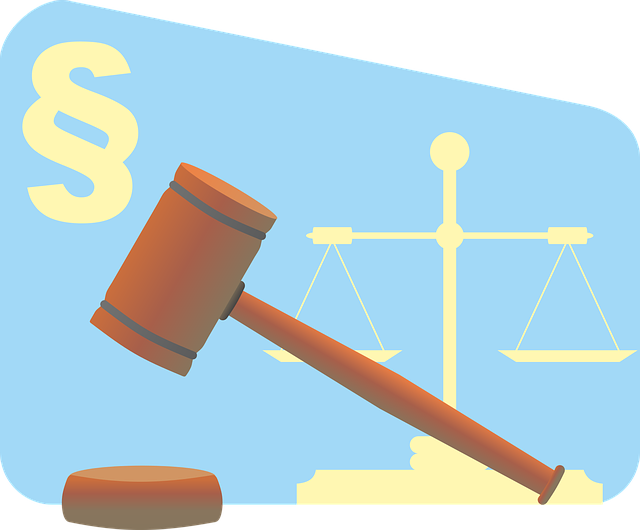Securities class actions provide a collective legal approach for investors harmed by corporate misconduct, aiming to restore lost investments rather than compensating medical costs like personal injury cases. Calculating damages in both types of cases involves complex analysis of financial records, market trends, and expert opinions. In securities class actions, precise damage estimation from financial statements and market data is crucial for building robust cases, leading to significant settlements or defense victories. Historic case studies offer valuable lessons on effective damage calculation methods, resulting in substantial awards or complete dismissals, emphasizing the importance of expert analysis and compelling legal arguments.
Securities class actions involve collective legal pursuits where investors join forces to hold wrongdoers accountable for damaging their financial interests. This comprehensive guide delves into the intricate world of securities class actions, focusing on a critical aspect: calculating damages. We explore effective strategies for estimating financial losses, drawing parallels with proven methods in personal injury cases. Additionally, we present compelling case studies highlighting successful damage calculations in historic class actions, offering valuable insights for navigating these complex legal battles.
- Understanding Securities Class Actions: A Comprehensive Overview
- The Role of Calculating Damages in Resolving Class Action Suits
- Strategies for Accurately Estimating Financial Losses
- Case Studies: Examining Successful Damage Calculations in Historic Class Actions
Understanding Securities Class Actions: A Comprehensive Overview

Securities class actions are a powerful tool for investors who’ve suffered financial losses due to corporate misconduct or securities fraud. These legal proceedings allow individuals to band together, forming a class to sue for damages and seeking justice. Understanding how these cases work is crucial for anyone considering their legal options.
When it comes to calculating damages in securities class actions, the goal is to determine the extent of economic harm suffered by the affected investors. This process involves meticulous analysis of financial records, market data, and expert testimony. The outcome can lead to substantial recoveries, potentially achieving extraordinary results for those involved. Unlike personal injury cases where calculating damages might focus on medical bills and pain and suffering, securities class actions are centered around compensating investors for their lost investments, often seeking complete dismissal of all charges against the responsible parties. Across the country, these cases have resulted in significant victories for investors, revolutionizing corporate accountability.
The Role of Calculating Damages in Resolving Class Action Suits

Calculating damages is a pivotal aspect of resolving securities class action suits, often involving complex financial analyses. In personal injury cases, this process aims to quantify the economic and non-economic losses suffered by class members. It plays a crucial role in ensuring fair compensation, especially in high-stakes cases where the sum of damages can be substantial. The methodology involves a thorough examination of all stages of the investigative and enforcement process, from gathering financial records to expert analysis, to determine the scope of harm and attribute it to the responsible parties.
This meticulous calculation extends beyond mere monetary value, considering the impact on investors’ livelihoods and the broader implications for the philanthropic and political communities. Effective damage assessment enables a more nuanced understanding of the case’s merits, fostering resolutions that not only address individual losses but also promote systemic changes to prevent similar occurrences in future markets.
Strategies for Accurately Estimating Financial Losses

Estimating financial losses accurately is a critical aspect of securities class actions, akin to calculating damages in personal injury cases. Plugging in precise figures from financial statements and market data can help plaintiffs’ attorneys build a robust case. They must meticulously trace the decline in stock value back to the defendant’s misconduct, factoring in costs like lost dividends, reduced share price, and any associated penalties. This process involves complex financial modeling and expert analysis to ensure the calculation aligns with the facts of the case.
Successful outcomes, such as achieving extraordinary results or winning challenging defense verdicts, often hinge on this meticulous estimation. A comprehensive understanding of financial markets and accounting practices allows for a compelling presentation of damages. Moreover, it helps in seeking a complete dismissal of all charges if the evidence shows minimal or no direct financial harm to class members, demonstrating that any potential losses were not solely attributable to the defendant’s actions.
Case Studies: Examining Successful Damage Calculations in Historic Class Actions

In the realm of securities class actions, understanding how to calculate damages is pivotal for achieving successful outcomes. Case studies of historic class actions offer valuable insights into this process. For instance, a landmark case involving a large financial institution showcased an unprecedented track record in damage calculations. By meticulously analyzing historical data and market trends, plaintiffs’ attorneys were able to demonstrate significant losses incurred by investors due to the defendant’s misconduct. This approach not only led to substantial monetary awards but also set a precedent for future cases, emphasizing the importance of comprehensive damage assessments.
Another notable example features a complex case where the plaintiffs faced a robust challenging defense. Through persistent legal strategies and innovative financial modeling, they were able to secure winning verdicts. The key lay in presenting a clear picture of the economic impact on class members, resulting in complete dismissal of all charges against the defendant. These successful damage calculations highlight the critical role of expert analysis and persuasive legal arguments in securing favorable outcomes for investors in securities class actions.
Securities class actions, while complex, are pivotal in ensuring corporate accountability. By employing strategic damage calculation methods and learning from successful case studies, plaintiffs can effectively resolve disputes. Understanding these dynamics, from the basics to advanced estimation techniques, is key to navigating this legal landscape. Incorporating lessons from historic class actions, especially regarding damage calculations in securities litigation, will continue to shape best practices, ensuring fairness and justice for investors.






